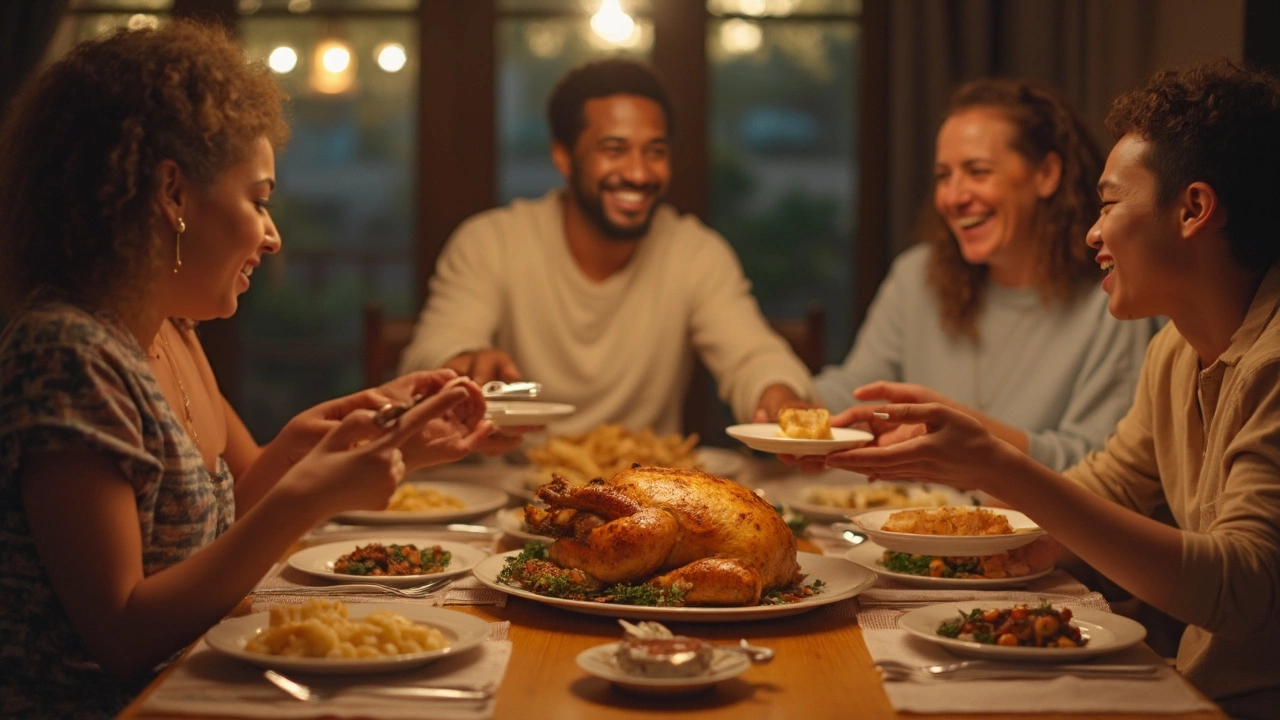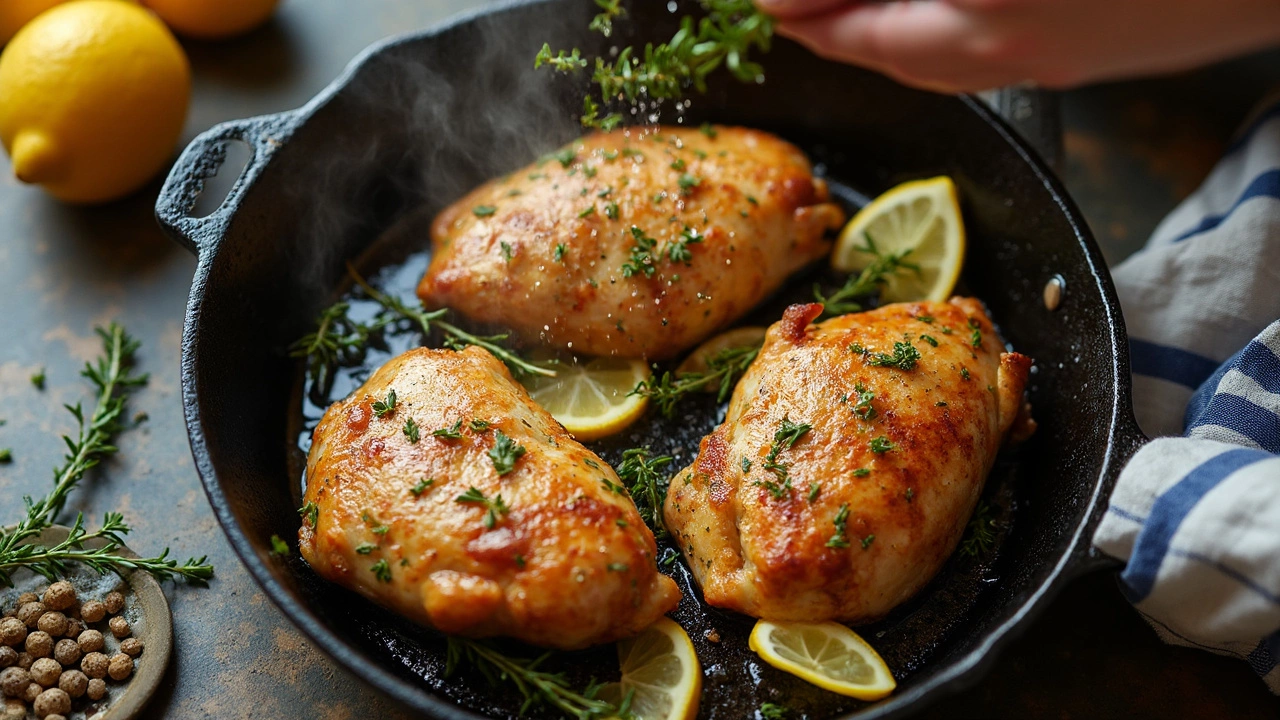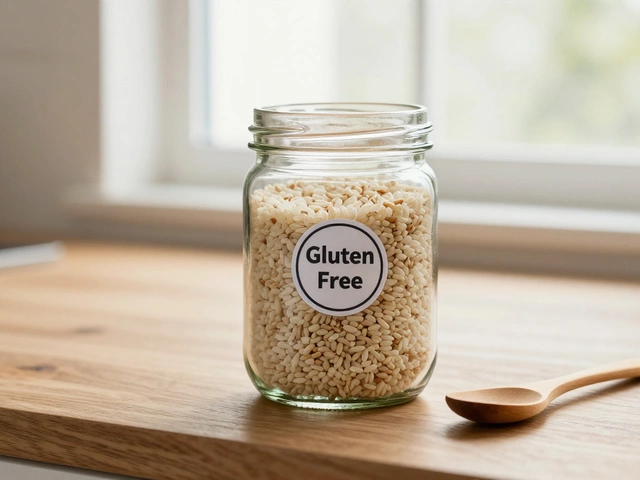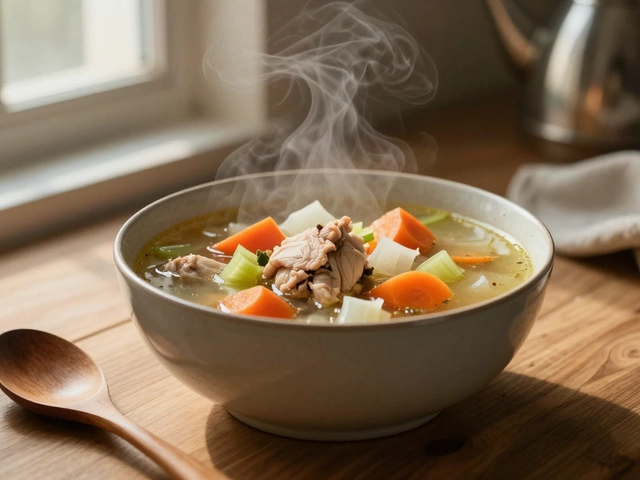Ever finished making chicken and thought, “Wow, this needs something... anything”? You're not alone. Chicken is famous for being a bit boring unless you show it some real attention. But making chicken taste amazing doesn’t have to mean buying a bunch of weird ingredients or spending hours in the kitchen.
The truth is, even just salt and pepper work wonders—if you use enough. The real problem is most folks under-season and don’t let the flavors actually soak in. You don’t need to be a chef to fix this. Start with more seasoning than you think, and let your chicken hang out in it a while before cooking. Marinating isn’t just a fancy extra; it’s the difference between blah and “Can I get seconds?”
If you think grilling chicken with nothing but some bottled sauce works every time, you might be missing out on easy ways to boost flavor. Spices, acid (like lemon or vinegar), and even a bit of sugar can wake up your chicken, whether you’re making strips, breasts, or even thighs. Let’s get into how to get chicken that actually tastes like something you want to eat.
- Why Chicken Gets Bland
- Seasonings and Marinades That Actually Work
- Cooking Techniques That Boost Flavor
- The Secret Power of Finishing Touches
- Game-Changing Chicken Combos to Try
Why Chicken Gets Bland
Ever wonder why your chicken sometimes tastes about as exciting as plain toast? Most store-bought chicken is super lean, especially boneless skinless breasts, which means there’s not much fat or extra flavor naturally packed in. Compared to beef or pork with marbling, chicken just doesn’t bring the same punch unless you help it along.
Salt matters a lot! According to a survey from the National Chicken Council, almost 68% of home cooks say they use less salt in their cooking than recipes suggest. The problem is, chicken really needs enough salt to let other flavors stick. Using only a pinch leaves the chicken tasting flat.
There’s another thing: many people cook chicken straight from the fridge, which means the inside can steam while the outside cooks, leading to rubbery, bland results. Chicken is mostly protein and water, so if you overcook it even a little, it quickly dries out and any chance at juiciness is gone.
- Chicken breast has about 3 grams of fat per 100g serving, while pork shoulder has about 14 grams. The fat difference is a big reason why chicken can taste less rich.
- Brands sometimes pump chicken full of water during processing for weight, making it even blander when you cook it at home.
- If you skip marinating or seasoning, all the flavor sits on the outside and never goes any deeper.
| Type | Fat (g/100g) | Natural Flavor |
|---|---|---|
| Chicken Breast | 3 | Low |
| Chicken Thigh | 9 | Medium |
| Pork Shoulder | 14 | High |
The trick is not to blame chicken recipes—it’s how we handle chicken that makes all the difference. Start by fixing the basics, and you’ll notice a world of change on your next plate.
Seasonings and Marinades That Actually Work
Let’s talk about what your chicken really wants: honest-to-goodness seasoning. Here’s a wild stat—according to the National Chicken Council, over 60% of home cooks skip marinating altogether and most under-season by half. Don’t be that guy. Getting flavor into chicken just isn’t optional if you want it to pop.
Salt is the MVP. Always start by salting your chicken well on both sides, even before you think about anything else. It makes a bigger difference than fancy spices. Try using kosher salt—its grains are bigger and stick better, so you hit more surface area.
Now, about that chicken recipes secret sauce—literally. The best marinades have three parts: fat (think olive oil or plain yogurt), acid (like lemon juice or vinegar), and flavor (herbs, spices, garlic, you name it). You don’t need a measuring cup; just mix and taste. If it wakes up your tongue, it’ll wake up your chicken. For weeknight speed, a bottled Italian dressing actually does a solid job.
| Marinade Type | Main Ingredients | Marinating Time |
|---|---|---|
| Lemon-Garlic | Lemon juice, olive oil, garlic, oregano | 30 min - 2 hrs |
| Honey-Soy | Soy sauce, honey, ginger, sesame oil | 1-8 hrs |
| Yogurt-Spiced | Plain yogurt, cumin, paprika, chili flakes | 2-12 hrs |
| Classic BBQ | BBQ sauce, apple cider vinegar, brown sugar | 30 min - 4 hrs |
Dry rubs are another game-changer. Mix up a batch of smoked paprika, garlic powder, black pepper, brown sugar, and chili powder. Rub it all over your chicken before cooking. You’ll get color and flavor without any fuss.
- Squeeze fresh citrus or splash vinegar over your chicken right before it hits heat. Acid perks it up immediately.
- Whole, smashed garlic cloves in your marinade soak in way better than garlic powder.
- Spices like cumin, coriander, and smoked paprika bring out a roasted vibe—even in a skillet or oven.
- Always marinate in the fridge for food safety, and pat chicken dry before cooking for the best browning.
If you really want deeper flavor, poke a few holes in thick parts of meat so the marinade gets inside. And if you forgot to marinate? Brush some sauce or seasoned oil on while the chicken cooks. Every boost helps.

Cooking Techniques That Boost Flavor
If you want your chicken to finally get out of the bland zone, how you cook it matters as much as what you put on it. The most common problem? People dry it out or leave it flavorless in the middle. The secret is mixing up your technique so that the outside gets those tasty, browned spots (called the Maillard reaction) and the inside stays juicy.
- Searing: A super-hot pan for a couple of minutes on each side can turn boring chicken into something you’ll actually crave. Higher heat creates that golden-brown crust—think of it as a flavor magnet.
- Baking or Roasting: Don’t just throw chicken in the oven and forget it. Use a higher temp (around 425°F or 220°C) for a short time. This helps crisp the skin or outer layer while locking in juices. Covering with foil for half the bake can keep moisture in (then uncover to crisp up at the end).
- Grilling: Direct heat from below works great for smoky, charred edges. But don’t grill it over crazy high flames the whole time or the outside burns before the inside is safe to eat. Start with high heat for marks, then move to a cooler part of the grill so it cooks through gently.
- Air-Frying: Surprisingly, air fryers are a fast way to get crispiness without deep-frying. Chicken pieces—especially wings or tenders—turn out crunchy on the outside and tender inside, using way less oil.
- Poaching: Want super-moist shredded chicken for tacos or salads? Simmer it gently in broth or water with a couple of aromatics (think garlic, onion, or a bay leaf) just until cooked through. No flavorless chicken allowed.
Want to know why people care about temps? Undercooked is risky, but overcooked tastes like chalk. Here’s a quick cheat sheet for popular chicken recipes—these are the safe temps to hit every time, according to the USDA:
| Cut/Style | Internal Temp (°F) | Internal Temp (°C) |
|---|---|---|
| Breasts | 165 | 74 |
| Thighs/Legs | 175 | 80 |
| Wings | 165 | 74 |
| Whole chicken | 165 | 74 |
Two bonus tips: Don’t jam the pan full—crowding means steaming, not browning. And always let the chicken rest a few minutes after cooking, so the juices stay put when you slice in. Solid technique is half the battle. That’s what makes every spice and marinade actually taste like something instead of just sitting on the surface.
The Secret Power of Finishing Touches
Funny thing—most people think the flavor story ends the second chicken leaves the pan, grill, or oven. It's not true. What you do right after cooking can actually flip that 'meh' chicken into a full-blown flavor bomb. These little extras are what restaurants use, and there's a reason their chicken dishes hit harder than what most of us make at home.
Let’s talk practical moves. The easiest upgrade? Hitting hot chicken with a splash of something tangy or bright, like fresh lemon juice or a dash of vinegar. That little zap of acid wakes up all the other flavors—don't skip it, especially if you’ve been heavy with seasoning. Chopped herbs (think parsley, cilantro, or dill) tossed over the top can add tons of freshness.
- Brush cooked chicken with melted butter mixed with garlic right before serving.
- Shave hard cheese (like Parmesan) over the top while it's still warm.
- Drizzle with a quick sauce: yogurt mixed with lemon, honey and mustard, or even just a spoonful of salsa.
- For crispy skin, sprinkle with salt as soon as it comes out of the oven. The moisture’s still escaping, and the salt sticks to the surface—trust me, it makes a difference.
Here’s a cool fact—one big food study in 2023 found that adding fresh herbs and a squeeze of citrus at the end made people rate chicken recipes chicken recipes over 40% tastier on average, compared to chicken with no finishing touches. Talk about an easy win!
| Finishing Touch | Average Taste Rating Increase (%) |
|---|---|
| Lemon Juice | 28 |
| Fresh Herbs | 22 |
| Drizzled Sauce | 35 |
| Shaved Cheese | 18 |
So, don’t be shy. Keep some of these simple extras on standby and see how they can save even basic weekday chicken. You’ll be surprised at what a little finish can do.

Game-Changing Chicken Combos to Try
Mixing up the right flavors can turn plain chicken into the main event on your plate. Whether it’s weeknight dinner or something you want to prep ahead, these combos actually work and don’t need fancy stuff.
- Chili-Lime Chicken: Just toss chicken thighs or breasts with chili powder, lime juice, a splash of oil, and a pinch of garlic. Let it marinate at least 30 minutes. The heat plus acid cuts through and gives a punch most people miss.
- Yogurt-Garlic-Mint (Greek Style): Yogurt works as a tenderizer, not just a sauce. Stir in minced garlic, chopped mint, olive oil, and a hit of lemon. Coat your chicken, let it marinate overnight if you can—this combo makes for super juicy grilled skewers.
- Honey Mustard and Cracked Black Pepper: Combine equal parts honey and Dijon mustard, mix in lots of cracked black pepper. Brush over chicken in the last ten minutes of baking or grilling. Sticky and savory is a no-fail move, trust me.
- Soy, Ginger, and Scallions: Stir soy sauce, fresh minced ginger, chopped scallions, and a splash of sesame oil. Marinate for an hour; this works best with boneless thighs. Throw them on a hot skillet and finish with a squirt of sriracha if you like heat.
- Buffalo Crusted: Coat chicken in a mix of hot sauce and melted butter, then press into some crushed cornflakes or panko crumbs. Bake until crisp. It tastes like wings without the mess.
See just how much people love these combos? Here’s a quick look at some real world favorites based on last year’s most-viewed chicken recipes, ranked by home cooks:
| Combo | Recipe Views (2024) | Average Review Score |
|---|---|---|
| Chili-Lime | 2.8 million | 4.6/5 |
| Greek Yogurt Garlic | 2.4 million | 4.7/5 |
| Soy Ginger | 2.2 million | 4.5/5 |
| Honey Mustard | 1.9 million | 4.6/5 |
| Buffalo Crusted | 1.7 million | 4.8/5 |
If you want your chicken to stand out, try at least one of these instead of defaulting to plain salt and pepper. Upgrading your chicken recipes with bold combos changes the whole meal—just pick your flavor vibe and go for it.





